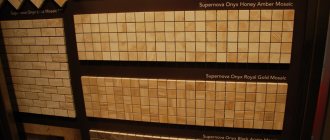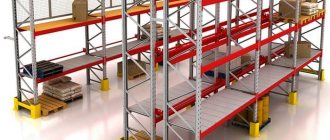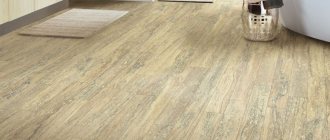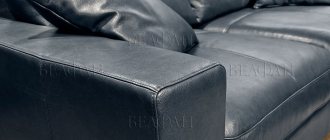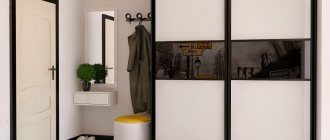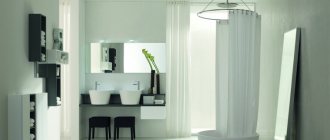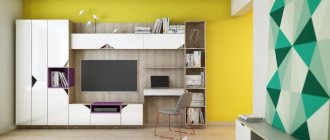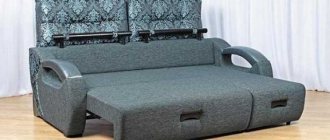When there is little space in the bathroom, many people abandon the bath in favor of shower stalls. This allows you not only to save space, but also to equip your bathroom with a convenient device and a variety of useful functions. When choosing such boxes, you must take into account the size of the shower cabin, because this is the main criterion when purchasing a product. Only after deciding on the height and width of the structure can you begin to select a booth from the point of view of design and functionality.
Why are dimensions so important?
But it is important to know not only the size of the shower stall, but also the dimensions of the room where you plan to install it. It often happens that hydroboxes simply do not fit in the height of the bathroom, and a tray that is too wide does not fit in the space allotted to it. Therefore, when buying a shower cabin, you should take into account the size of the room so that bathing is comfortable, and at the same time the shower does not take up much space.
Before installation, carefully measure the height of the ceilings, because in some models the tray exceeds 40 cm, and shower cabins with bathtubs are even higher. Thus, if the height of the pallet is 40 cm, and the walls of the cabin are 175 cm, then the minimum ceiling height in the room must be 235 cm, otherwise the structure simply will not fit. Not every bathroom has such dimensions, and it is worth paying attention to the more modest sizes of shower trays.
Glass or plastic: which materials are trustworthy?
When choosing a shower enclosure, it is important to consider not only the size and dimensions, but also the materials from which the partitions and trays are made.
To fill the profiles of shower enclosures in the premium segment, tempered glass with a thickness of 4–8 mm is usually used - a practical and durable material that has a noble appearance and excellent hygienic properties. After heat treatment under pressure, the glass sheet becomes resistant to impact loads. If you do break the shower box, do not be afraid of cuts; fragments with smooth edges are not dangerous. Caring for glass shower structures is easy. To protect against stains, many manufacturers apply a polymer film to the glass surface. If there is no dirt-repellent coating, do not forget to rinse the shower enclosure with warm water so that soap splashes do not leave streaks on the walls.
For budget shower enclosures, the profile is filled with plastic. Plastic is similar in appearance to glass, but is more easily deformed, quickly accumulates dyes and turns yellow over time. To care for plastic fencing, special detergents are used that do not contain aggressive reagents, solvents or abrasive particles.
Materials for shower trays: advantages and disadvantages
Most shower trays are made from acrylic.
The lightweight polymer composite retains heat well, effectively absorbs noise, and does not absorb dirt or foreign odors. The strength of the tray is determined by the thickness of the acrylic layer; the walls of the product should not be visible. The weaknesses of acrylic include sensitivity to abrasive wear and shock loads, which is partly compensated by the metal frame. Porcelain and earthenware are more resistant to minor damage and are easy to clean, but are practically unable to resist shock loads. In addition, ceramic surfaces heat up slowly, so standing barefoot on a tray is not always pleasant.
Cast iron surpasses all materials in strength, however, due to its heavy weight and difficulties during installation, it is rarely used. Steel is lighter than cast iron, but steel trays hold the load worse and make a lot of noise.
The most expensive pallets are made from artificial stone - cast marble, but the high quality justifies the cost. The new generation composite embodies the positive qualities of all known sanitary materials:
- large margin of safety;
- immunity to abrasion and wear;
- high thermal conductivity;
- hygiene and ease of care;
- low noise level.
In the Praktika online store you can choose and buy at a profit a certified shower enclosure of Russian or foreign production. Our catalog contains the most interesting offers from leading domestic and global brands in St. Petersburg and the region. Don't overpay for quality assurance!
Main dimensions of shower stalls
The modern plumbing market offers a wide selection of shower cabins of various types and sizes. Typically, manufacturers produce standard sizes of shower cabins of the most popular models and shapes, focusing on the typical dimensions of bathrooms.
If we take the criterion of wall length as the basis for classification, then all shower stalls can be divided into three groups:
- small-sized (the minimum wall dimensions of these models are from 70 to 100 cm);
- medium (here the minimum wall size ranges from 80-130 cm);
- full-size (in this case, the wall length reaches 170 cm or more).
Based on the height of the structure, there are low and high models. In the first case, the height of the shower stall, including the tray, is in the range of 170-190 cm, and in the second case, the height of the product can reach 210-240 cm.
The dimensions of the smallest shower cabin, according to the parameters listed above, are as follows: the walls are about 75 cm long and 170 cm high; such models may not have a tray. Some manufacturers produce structures with a minimum wall size of 70 cm, which is a non-standard size for asymmetrical structures.
Shower cabin with equal sides
The equilateral design is one of the most common models. It is much easier to install such a shower cabin yourself than large or non-standard products. The front part of this model can be not only round, but with sliding walls.
The minimum sizes of shower stalls with equal sides are 70x70 cm and 80x80 cm. The first model with a straight front panel will fit perfectly into a small room, and the second option is more suitable for a small room if the front panel is rounded.
Square shower stalls can also have dimensions of 90×90 and 100×100 cm. Such designs can save space in a small room, as well as advantageously decorate the interior of the bathroom.
Some manufacturers periodically make limited releases of equilateral shower cabins of larger sizes, the length of which can be 120x120 cm. The height of the shower cabin in this case can exceed 240 cm. However, these models have one significant drawback - the front panel with hinged doors takes up a lot of space places when they open.
Design Features
A shower enclosure resembles an ordinary partition or box, which is used to enclose a bathtub or cubicle (corner). Square and rectangular models usually have two curtains, one of which is fixed, and the second serves as a door. These can also be sliding screens with frame sections if you have a minimum of free space.
The most durable are frame partitions. The frame is an aluminum or plastic contour to which the fencing parts are screwed. The aluminum version is more durable, but the plastic profile will cost you less, so decide for yourself here.
Asymmetrical rectangular booths
So, we found out that the dimensions of standard booths can be:
- symmetrical (square): 70×70, 80×80… 120×120 cm;
- asymmetrical (rectangular): 80×100, 80×110, 80×120, 90×110 and 90×120 cm.
The dimensions of the shower stall of the standard asymmetrical model allow the structure to be placed on the bathtub, while simultaneously combining two possibilities for taking water procedures. However, a shower cabin and a bathtub are incompatible if the design is equipped with the functions of a steam room, hydromassage, or tropical shower.
Therefore, before combining a bath and shower, you need to study the functionality of the product and its dimensions.
Shower with bathtub or tray
If the bathroom already has a bathtub, and you don’t want to give it up, then you can supplement it with a shower stand and partitions, turning it into a shower stall with a bathtub. It should be taken into account that the standard height of a bathtub is about 70 cm, and a shower is 170 cm, so the ceiling height in such a room should be at least 240-250 cm. A shower in which there is a bathtub instead of a tray is called a combined shower.
Shower cabins can be installed on a tray with low (10-15 cm) or high (40-60 cm) sides. The first model is installed almost on the floor, but when installing such a structure, you need to take into account that communications must fit under it: a siphon and sewer pipes. A shower with a bathtub or tray is installed only in a large or medium-sized bathroom.
Shower trays come in different shapes and sizes. The height of the structure with a tray or bathtub ranges from 210 cm to 245 cm, and the length of such a product is about 150-170 cm. Thanks to these dimensions, the cost of the equipment increases accordingly.
We decide on the manufacturer
When choosing a shower cabin model, you need to expect that it will be able to perform its functions for at least 7-10 years. And after this period, you may want to update the outdated interior, at the same time replacing the box. All manufacturers now offer advanced functionality, but some of them have already proven themselves in the market and have earned positive customer reviews. Which brands should you trust if you are planning to purchase a quality shower cabin?
- Among European manufacturers, the leading places are occupied by Germany (brands Villeroy & Boch, Huppe, Am.Pm, Grossman), Italy (Artex, Albatros, Jacuzzi), Austria (Laufen). Reliable design, wide functionality, durable, high-quality materials and a guaranteed long service life are characteristic features of premium products manufactured by companies. The cost of the models is appropriate - from 100 thousand rubles and above.
- In the middle price range there are booths from Polish (Cersanit, Ravak), Czech (Riho, Vagnerplast, LUXUS), Finnish (Ideal Standard, IDO) manufacturers. With excellent European quality, cabins of these brands can be purchased at prices starting from 60 thousand rubles.
- The quality of the products of many foreign companies is not inferior, and in some ways even superior to shower boxes of domestic brands, but the stated prices are an order of magnitude lower. These are Aquanet, Triton, Aqua Joy. The products of these manufacturers cost from 25 thousand rubles and more, depending on functionality and size.
- Budget options - shower cabins from Chinese companies. The most famous are Atlantis, Erlit AquaStream, Appollo. These products are distinguished by their diversity and wide range of functions. The quality is inferior to European, but it should be noted that over the past 5 years, Chinese goods have improved significantly. The cost of booths is from 12 thousand rubles.
Advice.
If at the time of purchase there is no financial opportunity to purchase a branded product, you can choose a budget model made in China. After a year or two, you can replace the cabin with a higher quality, more expensive one, or if functionality decreases, install another budget option.
Semicircular corner shower model
This type of shower fixture is installed in a corner. The door width ranges from 70 cm to 90 cm, so this design is ideal for a small room where every centimeter is worth its weight in gold. The minimum dimensions of this hydrobox with compartment doors are 70x70 cm, which allows you to minimize the occupied space.
Such a shower cabin, as a rule, is installed on a low tray from 10 cm to 15 cm. The doors themselves and the panel of the product are attached to the walls of the bathroom. The semicircular shower cabin has standard dimensions of 70x70 cm - 110x110 cm, and the dimensions of larger models vary from 125x125 to 150x150 cm.
Dimensions of booths without rear walls
The shower stall may not have back walls; their function is performed by the walls of the bathroom. Such models are installed on a thin pallet, and shower cabins are small in size - from 70x70 cm to 100x100 cm. The most reliable and stable is the corner design, on the pallet of which sliding or hinged doors are installed.
The height of the product, as a rule, does not exceed 200 cm. Cabins without back walls are usually used only for taking water procedures in the shower. If you want to combine a cabin and a bathtub, then it is better to choose a closed-type hydrobox with high tray walls.
How to do it?
Remove the so-called from the upper and lower horizontal profiles. transport corners (If you suddenly forgot to remove them, expand the shower corner on each side by 2 cm, so the shower corner should not copy the radius of the tray!). Install the upper and lower horizontal profiles on the right and left fixed walls, then screw them. Tip - Lubricate the screws with Vaseline to make them better screwed to the aluminum profile.
| Attach the shower corner to the installation profiles, place the corner on a pallet, level it using a level, and mark the profiles on the wall. Drill holes in the wall for the dowels, and then screw the profiles to the wall. Applying silicone sealant to the installation profile: Apply silicone sealant to the bottom of the installation profile to prevent water from leaking outside the pan. Apply sealant to the installation profile from the outer side vertically. Tip - do not apply sealant to the inside of the shower enclosure vertically to allow water to flow back freely. | Attach the shower corner to the installation profiles and level it using a level. | Secure the shower enclosure from the inside into the installation profiles using screws with a plastic spacer and cover them with a decorative cap. |
| Attach metal roller mechanisms to the drilled holes in the top of the glass doors. | Attach a plastic door fastening mechanism to the holes in the bottom of the glass doors, which in the future will allow you to easily remove and put on the glass doors for easier cleaning. Place glass doors using a roller mechanism on the upper horizontal profile, and snap it to the lower profile using a plastic mechanism. | Insert handles into glass doors. Attention - place a transparent silicone pad under each part of the handle. |
| Attach plastic decorative strips to the fixed glass part of the shower enclosure. Tip - for better manipulation of the bar, rub the glass with soapy water. | Place plastic magnetic seals on glass doors for perfect door sealing. Treat the entire shower corner along the outside contour with silicone. Attention - do not seal the shower enclosure from the inside to allow water to flow freely into the shower tray. | Ready-made frame shower enclosure Rapier NRKCP4. |
Closed shower boxes
This model is closed on all sides and is considered completely sealed. It is these expensive structures that are equipped with all sorts of functions: steam room, lighting, hydromassage, radio, tropical rain, etc. Only in a sealed hydrobox can you install all the necessary equipment for additional functions.
Products can be equipped with a low or high tray. The length and height of this type of booth are quite large, so when choosing a design, you must take into account the distance from which the product is connected to the drain, sewerage system and water supply system. Closed shower cabins have a minimum size of 90x90 cm.
Non-standard dimensions and dimensions according to SNiP
Even with a wide selection of different shower designs, it is not appropriate to install a standard-sized shower stall in every bathroom. This may be hampered by a certain arrangement of furniture, other plumbing fixtures, communications, doors, etc. Standard hydroboxes can make it difficult to access other items in the bathroom. Therefore, some consumers order shower stalls of non-standard dimensions and shapes.
These can be small structures with dimensions of 70x70 cm or, conversely, huge models with a width of 150x150, or exact dimensions along the length of the walls 97x97 cm. Sometimes it becomes necessary to install shower products with a trapezoidal, oval or other tray. Non-standard sizes also include designs with dimensions of 110×85 cm, 170×85 cm, 150×85 cm or 170×110 cm.
The cost of custom-made plumbing is much higher, but it allows you to choose the most optimal size of the shower stall. Therefore, non-standard shower designs are in demand and are installed both in small bathrooms of small apartments and in spacious rooms in private houses.
In the modern world there are no standards or restrictions regarding the size, type and shape of plumbing products. Initially, shower cabins with a high tray were used in a variety of health complexes, for which regulations were provided.
For booths installed in public premises, standards according to SNiP 2.09.04-87 are still provided to this day. Expensive and high-quality models from trusted manufacturers have certificates of compliance with GOST, but the vast majority of shower stalls are not subject to certification.
Installing a shower enclosure yourself
The bathroom renovation is completed. The tilers have done their job, and all you have to do is install the shower enclosure, which can be easily installed using a simple installation kit. Framed structures take the least amount of time and work because they are sold either fully assembled (for example, Supernova shower enclosures) or partially assembled, so the likelihood of you spoiling something is small. The only negative is that it is a large box, which is difficult to fit into a passenger car. Frameless designs, on the contrary, require a lot of precision during installation. And it's not just about dexterity. Few bathrooms have perfect right-hand corners and straight walls, which can make it difficult to properly adjust a frameless shower enclosure. “When it comes to design, functionality and ease of installation, framed shower enclosures (such as Blix or Rapier) are a popular compromise. The prepared individual parts can be easily assembled at home using simple tools such as a level, drill and screwdriver.” says instructor Ing. Rudolf Kňaze.
